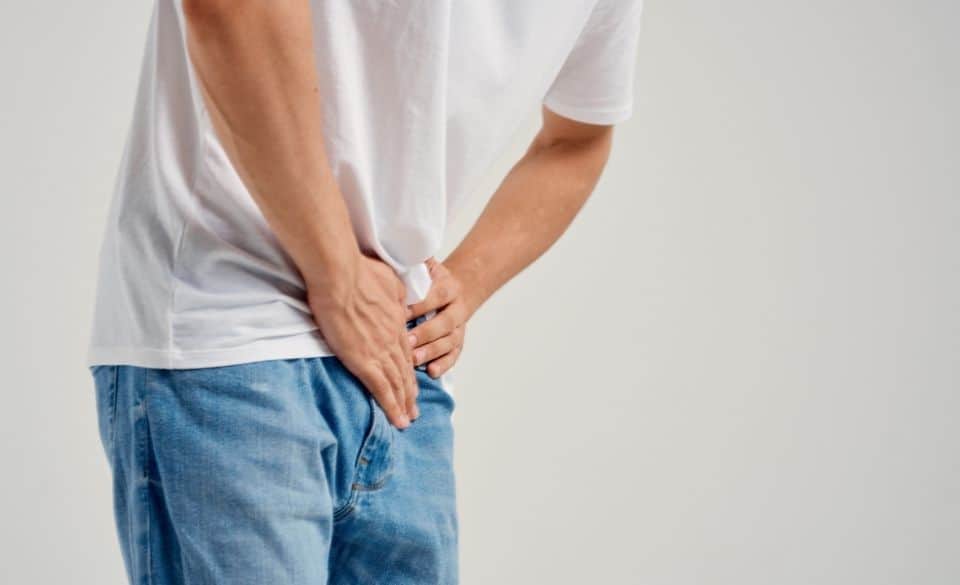
Groin Strain In Runners – Ultimate Guide To Groin Pain & Injury
Page Contents
Have you ever had intense pain inside your thigh before? If so, you may have experienced a groin injury. Even though you may not hear about groin strains in runners much, it is a common injury within the running community.
Groin strains in runners are linked to a sudden contraction of the groin muscles. Alternatively, it can be also caused by overuse of the muscles. This is common in long-distance runners, trail runners, and track athletes (sprinters).
If you are a runner and have experienced nagging pain around your groin, keep reading. Because in this article, we discuss the causes, symptoms, and prevention of groin strains from running.
So, let’s kick it off.
What Is A Groin Strain?
Regardless of whether you are a runner or not. A groin strain is an injury in the adductor muscles. These adductor muscles are located in your inner thigh and can be over-worked as a runner.
Sudden movements are usually the main trigger of a groin strain. However, a large increase in mileage, off-road running, and even over-training can cause a groin strain too. That means athletes are more likely to get this injury over someone else.
The good news is a groin strains aren’t usually too serious. Although, some may take longer to heal than others.
The main symptom of a groin strain is a sudden, sharp, and tense pain in the groin area. The pain is usually located in the belly of the muscle (center), or slightly higher.
Other symptoms may include swelling and bruising. However, this usually comes a few days after the first symptoms (pain and tenderness in the inner side of your thigh).
If you feel the pain is worse when you bring your legs together, or when you try to raise your knee, you may have symptoms of a strain. Alternatively, if you feel a snapping or popping feeling, which is then followed by intense pain, you most likely have a strain in the groin.
Groin Strains In Runners? Complete Guide
Runners who experience groin pain during or after a run have most likely torn a ligament, tendon, or muscle.
The groin is a complex area with many tendons, muscles, and ligaments which connect to the hips and legs. Thus helping to stabilize the hips and legs during running. So, it’s not uncommon for runners to experience pain in the groin or a strain.
For some runners, a groin strain may not be so serious and can recover in a matter of weeks. However, for others, it can take longer to heal.
Runners that experience a groin strain often have tight hips, and paired with a sudden movement or an increase in training load can put excess stress on the inner thigh muscles. So, it is important to stretch the hip muscles, inner thigh muscles, and hamstrings regularly to prevent the muscles from over-tightening.
Most runners that develop a groin strain can make a gradual return to running by including heat, gentle stretching, and strengthening into their training. However, if your mechanics are out of line, you may need to look at your running technique. Your running technique can usually be analysed by a qualified physiotherapist or running coach. Alternatively, go into a running store and talk to one of the salespeople there. They may be able to look at your running technique on the treadmill.
Prevention Of Groin Strains While Running
Luckily there are some ways to prevent a groin strain while running. Some of these include reducing the increase in mileage or intensity to 10% a week and regular stretching of the hip, thigh, quadriceps, and hamstring muscles.
Alternatively, regular foam rolling can work as well as regular stretching.
Regular strength exercises can help prevent a groin strain from happening. So it is important to plan in time for strength training, as it has shown to help reduce the chances of picking up an injury as a runner.
Other things like reducing the amount of off-road running you do can reduce the chances of sharp or fast movements (think of jumping over rocks, or part of a stream/river).
In general, it is about keeping the surrounding muscles of the groin supple and relaxed, allowing them to work at their full range of motion.

Treating A Groin Strain
Treating a groin strain is important as it can reduce the recovery time greatly. During the first few days of the injury, make sure you:
– Rest the groin
– Ice the surrounding areas
– Use compression
– Elevate the groin
– Use nonsteroidal anti-inflammatory drugs
Depending on the severity of your strain, you may need other treatments. Some of these treatments include:
– Physical therapy
– Massage therapy
– Heat and stretching
– Electrotherapy
However, if it is a serious strain (grade 3), you may need surgery to help repair the fibers that have been torn. This is typically around the area where then the tendon is located.
With the proper amount of rest, icing, elevation, and use of nonsteroidal anti-inflammatory drugs, you should be able to return to running in 4-8 weeks. However, with more serious strains, it may take months to recover.
It is important regardless of the level of strain that when you return to running it is easy. That means slowly increasing the mileage and intensity over weeks or months. Rushing back into training too quickly can overload the groin muscles and can ultimately bring back symptoms of the strain again.
Like any injury, speak to a professional before returning to running. They should be able to give you the all-clear to start running and provide rehabilitation and strengthening exercises for you to follow.
If you are unsure how to start back your training, speak to a qualified running coach. They can help plan out the training gradually to make sure the injury doesn’t occur again.
During this period it is also wise to visit a running coach or physiotherapist that can look at your running form. This may help prevent any technique issues that may have caused the strain (if it wasn’t from a sharp movement).



